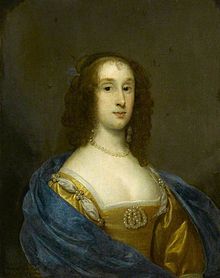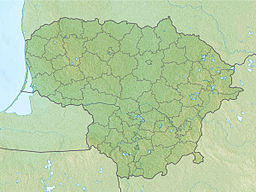다신교
Polygodial | |
| 이름 | |
|---|---|
| 선호 IUPAC 이름 (1R,4aS,8aS)-5,5,8a-트리메틸-1,4,4a,5,6,7,8,8a-옥타히드로나프탈렌-1,2-디카발알데히드 | |
| 기타 이름 폴리고다이얼, 타데오달, 타데오날, 드림-7-ene-11,12-다이얼 | |
| 식별자 | |
3D 모델(JSmol) | |
| 켐벨 | |
| 켐스파이더 | |
펍켐 CID | |
| 유니 | |
| |
| |
| 특성. | |
| C15H22O2 | |
| 어금질량 | 234.339 g·1998−1 |
달리 명시된 경우를 제외하고, 표준 상태(25°C [77°F], 100 kPa)의 재료에 대한 데이터가 제공된다. | |
폴리고디알은 도리고추, 산후추, 호로피토, 카넬로, 파라크레스, 물뿌리개, 덴드로도리스 사바타에서 발견되는 화학 화합물이다.[1][2][3][4][5]
화학적으로 CHO식의15222 드리만 타입의 세스퀴터펜 다이얼알데히드다.
그것은 따뜻하고 톡 쏘는 맛을 낸다.
polygodial의vitro 생물학적 활동 또한 과학적인 문학에 토끼, 기니 pig,[14]anti-infla의 함정에서 항균성 항진균제 activities,[6][7][8]antihyperalgesia,[9]강력한attachment-inhibitory activity,[10]곤충 식물 activity,[11]antinociception,[12][13]vasorelaxing 행동을 포함한 것으로 알려졌다.과 항알레르기의mmatory activit아이즈[15][16][17]
다신체의 1차 항응고 작용은 비이온성 계면활성제로서, 비특이적으로 적분단백질의 지질-단백질 접점을 교란시켜 기능적 순응을 변성시킨다.또한 다신경이 플라즈마 막 전체에 수동적으로 확산되어 침투할 가능성이 있으며, 일단 세포 내부에 들어가면 다양한 세포내 화합물과 반응할 수 있다.[18]
또한 항균 성질을 가진 살충제로서 곤충이 굶어죽게 한다.
참조
- ^ 비티, G.A.C., 2000년 이후의 스프레이 오일, 웨스턴 퀸즐랜드 대학교, ISBN1-86341-902-0
- ^ McCallion, Rosemary; Cole, A.; Walker, J.; Blunt, J.; Munro, M. (1982). "Antibiotic Substances from New Zealand Plants". Planta Medica. 44 (3): 134–138. doi:10.1055/s-2007-971422. PMID 7089094.
- ^ Muñoz-Concha, Diego; Vogel, Hermine; Yunes, Rosendo; Razmilic, Iván; Bresciani, Louisiane; Malheiros, Angela (2007). "Presence of polygodial and drimenol in Drimys populations from Chile". Biochemical Systematics and Ecology. 35 (7): 434–438. doi:10.1016/j.bse.2006.10.019.
- ^ M 조나손(1996)세키테르페노이드 불포화 다이얼데히드 - 반응성과 생체성에 영향을 미치는 구조적 특성.스웨덴 룬드 대학의 박사학위 논문.ISBN 91-628-2215-2
{{cite web}}: 외부 링크 삽입 (도움말);누락 또는 비어 있음(도움말):"Archived copy" (PDF). Archived from the original (PDF) on 2011-10-03. Retrieved 2008-01-30.{{cite web}}CS1 maint: 제목(링크)으로 보관된 사본 }} - ^ Cimino, G.; De Rosa, S.; De Stefano, S.; Sodano, G.; Villani, G. (1983). "Dorid Nudibranch Elaborates Its Own Chemical Defense". Science. 219 (4589): 1237–1238. Bibcode:1983Sci...219.1237C. doi:10.1126/science.219.4589.1237. PMID 17771309.
- ^ Anke, Heidrun; Sterner, Olov (1991). "Comparison of the Antimicrobial and Cytotoxic Activities of Twenty Unsaturated Sesquiterpene Dialdehydes from Plants and Mushrooms". Planta Medica. 57 (4): 344–346. doi:10.1055/s-2006-960114. PMID 1775575.
- ^ Lee, Sang Hwa; Lee, Jae Ran; Lunde, Christopher S.; Kubo, Isao (1999). "In Vitro Antifungal Susceptibilities of Candida albicans and Other Fungal Pathogens to Polygodial, a Sesquiterpene Dialdehyde". Planta Medica. 65 (3): 204–208. doi:10.1055/s-1999-13981. PMID 10232062.
- ^ Kubo, Isao; Fujita, Ken'Ichi; Lee, Sang Hwa (2001). "Antifungal Mechanism of Polygodial". Journal of Agricultural and Food Chemistry. 49 (3): 1607–1611. doi:10.1021/jf000136g. PMID 11312903.
- ^ Mendes, Gilboé L.; Santos, Adair R.S.; Campos, Maria M.; Tratsk, Karla S.; Yunes, Rosendo A.; Filho, Valdir Cechinel; Calixto, Joăo B. (1998). "Anti-hyperalgesic properties of the extract and of the main sesquiterpene polygodial isolated from the barks of Drymis winteri (Winteraceae)". Life Sciences. 63 (5): 369–381. doi:10.1016/s0024-3205(98)00285-9. PMID 9714424.
- ^ Ban, Takahiro; Singh, Inder Pal; Etoh, Hideo (2000). "Polygodial, a Potent Attachment-inhibiting Substance for the Blue Mussel,Mytilus edulis galloprovincialisfrom Tasmannia lanceolata". Bioscience, Biotechnology, and Biochemistry. 64 (12): 2699–2701. doi:10.1271/bbb.64.2699. PMID 11210140.
- ^ Caprioli, Vincenzo; Cimino, Guido; Colle, Roberto; Gavagnin, Margherita; Sodano, Guido; Spinella, Aldo (1987). "Insect Antifeedant Activity and Hot Taste for Humans of Selected Natural and Synthetic 1,4-Dialdehydes". Journal of Natural Products. 50 (2): 146–151. doi:10.1021/np50050a002. PMID 3655790.
- ^ Mendes, G. L.; Santos, A. R.; Malheiros, A.; Filho, V. C.; Yunes, R. A.; Calixto, J. B. (2000). "Assessment of mechanisms involved in antinociception caused by sesquiterpene polygodial". The Journal of Pharmacology and Experimental Therapeutics. 292 (1): 164–72. PMID 10604944.
- ^ Malheiros, Angela; Filho, Valdir Cechinel; Schmitt, Clarisse B.; Santos, Adair R.S; Scheidt, Cristiano; Calixto, João B.; Monache, Franco Delle; Yunes, Rosendo A. (2001). "A sesquiterpene drimane with antinociceptive activity from Drimys winteri bark". Phytochemistry. 57 (1): 103–107. doi:10.1016/s0031-9422(00)00515-x. PMID 11336250.
- ^ André, Eunice; Malheiros, Ângela; Cechinel-Filho, Valdir; Yunes, Rosendo A.; Calixto, João B. (1999). "Mechanisms underlying the relaxation caused by the sesquiterpene polygodial in vessels from rabbit and guinea-pig". European Journal of Pharmacology. 386: 47–53. doi:10.1016/s0014-2999(99)00719-0. PMID 10611463.
- ^ Tratsk, K. S.; Campos, M. M.; Vaz, Z. R.; Filho, V. C.; Schlemper, V.; Yunes, R. A.; Calixto, J. B. (1997). "Anti-allergic effects and oedema inhibition caused by the extract of Drymis winteri". Inflammation Research. 46 (12): 509–514. doi:10.1007/s000110050234. PMID 9459082.
- ^ Da Cunha, Fernanda M.; Fröde, Tânia S.; Mendes, Gilboé L.; Malheiros, Angela; Filho, Valdir Cechinel; Yunes, Rosendo A.; Calixto, João B. (2001). "Additional evidence for the anti-inflammatory and anti-allergic properties of the sesquiterpene polygodial". Life Sciences. 70 (2): 159–169. doi:10.1016/s0024-3205(01)01387-x. PMID 11787941.
- ^ Martin, William John; Herst, Patries M.; Chia, Elizabeth W.; Harper, Jacquie L. (2009). "Sesquiterpene dialdehydes inhibit MSU crystal-induced superoxide production by infiltrating neutrophils in an in vivo model of gouty inflammation". Free Radical Biology and Medicine. 47 (5): 616–621. doi:10.1016/j.freeradbiomed.2009.05.035.
- ^ Kubo, Isao; Fujita, Ken-Ichi; Lee, Sang Hwa; Ha, Tae Joung (2005). "Antibacterial activity of polygodial". Phytotherapy Research. 19 (12): 1013–1017. doi:10.1002/ptr.1777.


